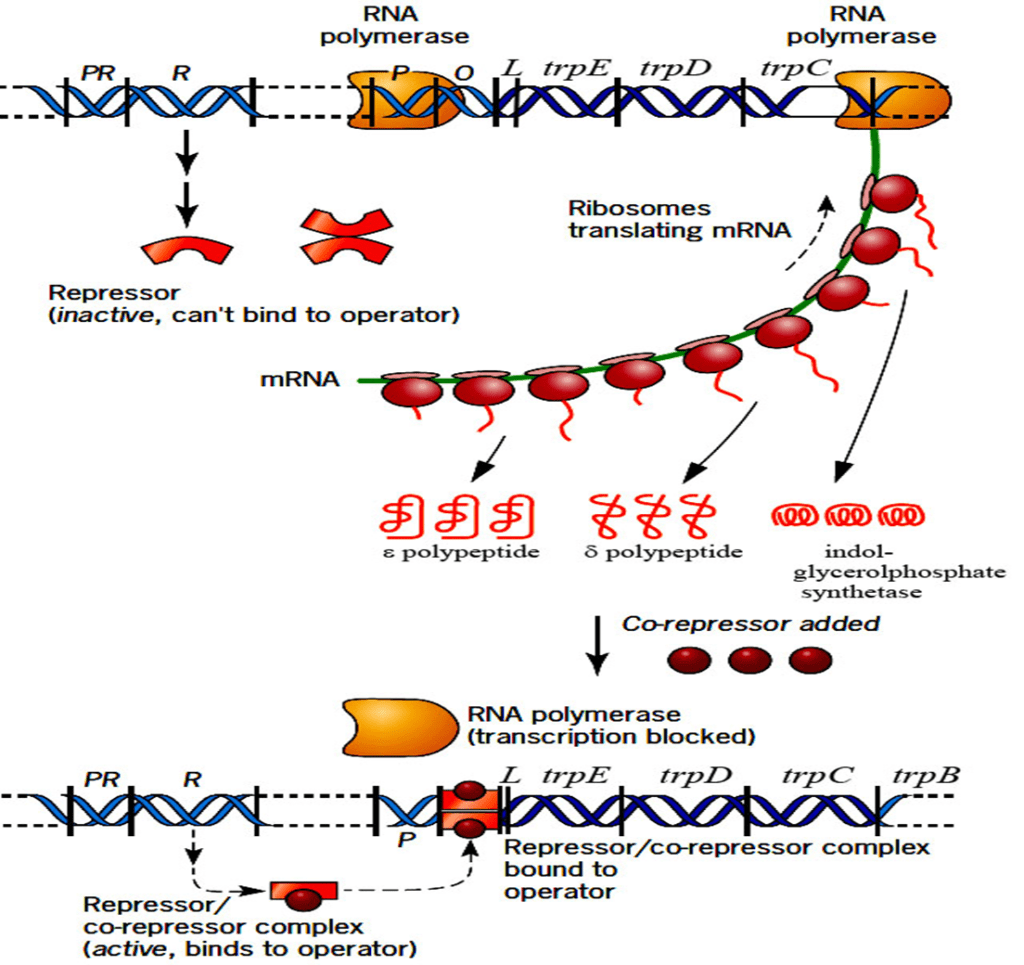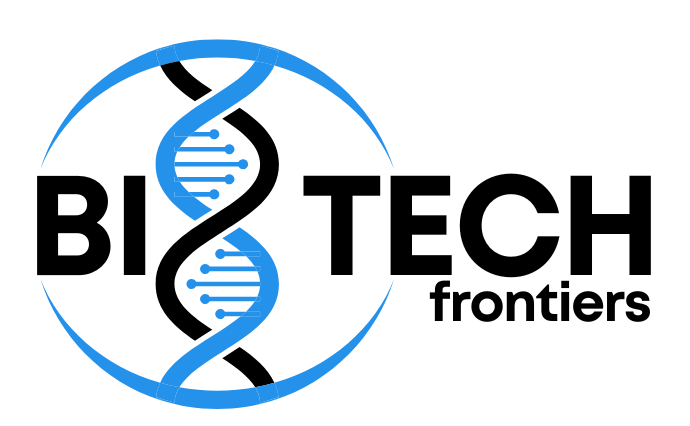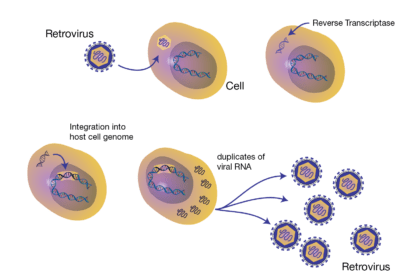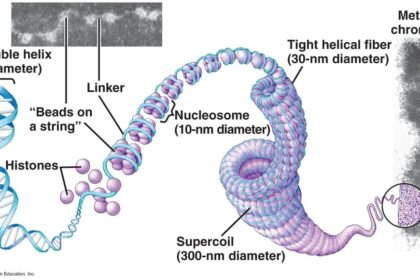Introduction to the trp Operon
The trp operon of E. coli controls the synthesis of enzymes required for the biosynthesis of the amino acid tryptophan. This operon has been extensively studied, particularly by Charles Yanofsky and his colleagues, to understand its regulatory mechanisms.
Structural Genes and Regulatory Sequences
Functions and Organization
The trp operon consists of five structural genes: trpE, trpD, trpC, trpB, and trpA. These genes are responsible for encoding enzymes that convert chorismic acid into tryptophan. The operon is regulated by adjacent regulatory sequences that ensure the structural genes are transcribed only in the absence or low concentration of tryptophan.
The trp Repressor
The trpR gene, which encodes the trp repressor, is not directly linked to the trp operon. The trp repressor, a dimer of 108-residue polypeptide chains, remains inactive until it binds to tryptophan, acting as a co-repressor. This complex can then bind to the operator region and inhibit transcription.
Promoters and Terminators
The trp operon features a primary promoter (P1) within the operator region and a weaker promoter (P2) at the distal end of the trpD gene. The P2 promoter increases the basal transcription levels of trpC, trpB, and trpA genes. Additionally, two transcription termination sequences (t and t’) are located downstream of trpA.
Leader Sequence
The trpL region specifies a 162-nucleotide-long mRNA leader sequence. This region plays a crucial role in the attenuation mechanism, another layer of regulation beyond repression.

Regulatory Mechanisms
Repression
Repression controls the initiation of transcription based on tryptophan availability:
- Absence of Tryptophan: RNA polymerase binds to the promoter region, transcribing the structural genes.
- Presence of Tryptophan: The co-repressor/repressor complex binds to the operator region, preventing RNA polymerase from initiating transcription.

In the derepressed state (absence of tryptophan), the transcription rate of the trp operon is approximately 70 times higher than in the repressed state (presence of tryptophan). Even in trpR mutants lacking a functional repressor, tryptophan addition still reduces trp operon expression by about tenfold through attenuation.
Attenuation
Attenuation is a secondary regulation mechanism affecting transcription termination:
- Attenuator Sequence: Located within the trpL region, it causes premature termination of trp structural genes transcription in the presence of tryptophan-charged tRNA.
- Hairpin Structures: The leader sequence can form alternate stem-and-loop or hairpin structures, depending on tryptophan availability.
Mechanism:
- Low Tryptophan: Ribosome stalls at the two Trp codons, preventing the formation of the transcription-termination hairpin (regions 3 and 4 pairing). Transcription continues past the attenuator into the trpE gene.
- High Tryptophan: Ribosome proceeds past the Trp codons, allowing the formation of the transcription-termination hairpin (regions 3 and 4 pairing). Transcription terminates at the attenuator.

Combined Effects of Repression and Attenuation
The combined effects of repression and attenuation can regulate the transcription of the trp operon over a range of almost 700-fold:
- Repression: Up to 70-fold reduction.
- Attenuation: Up to 10-fold reduction.
Broader Implications
Regulation by attenuation is not unique to the trp operon. Other operons, such as thr, ilv, leu, phe, and his, also utilize this mechanism. For instance, the his operon, once thought to be repressible, is now understood to be regulated entirely by attenuation.
References
- Principles of Genetics Sixth Edition by D. Peter Snustad and Michael J. Simmons; John Wiley & Sons, Inc.
- Genetics: A conceptual Approach by Benjamin A. Pierce, 3rd edition 2009, WH Freeman and Company
- Biochemistry 4th edition 2010 by R. H. Garrett and C. M. Grisham, Brooks/Cole, Cengage Learning USA
- Yanofsky, C. – Detailed analyses of the trp operon’s structural genes and regulatory mechanisms.
- Yanofsky, C., et al. – Research on the functions and interactions of the trp operon’s regulatory sequences.
- Yanofsky, C., Ito, J., et al. – Investigations into the role of attenuation in regulating the trp operon.






